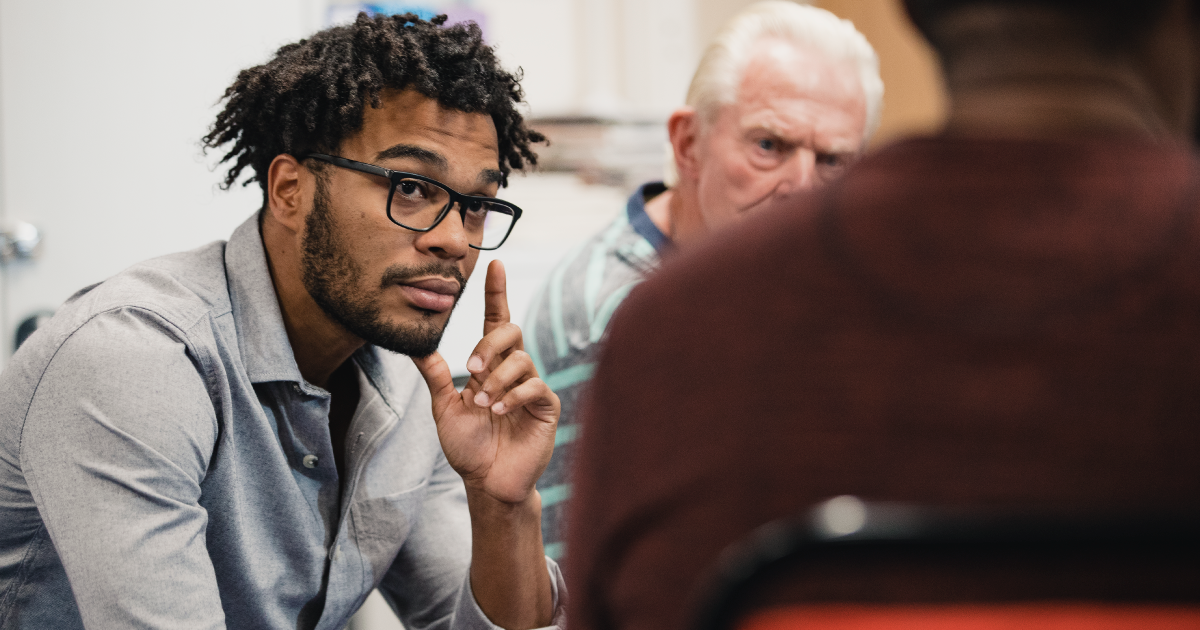
To learn more about best practices working with male survivors of sexual assault, NSVRC reviewed the Sexual Assault Services Program (SASP) 2017 Victim Services Data from the Violence Against Women Act Measuring Effectiveness Initiative. The SASP Formula Grant Program funds sexual assault programs and other organizations to provide services to sexual assault survivors. We were interested in learning how programs used this funding to provide services to men.
According to the report, 10.9% of victims served in 2017 whose gender was known identified as male. To learn more about how programs provide services to men, we identified several programs that reported higher-than-average rates of male survivors served with this funding stream. Out of these programs, we then identified centers that mostly served adults. Finally, we identified centers with differing service areas based on other reported demographic information including race, disability, and immigration status.
We then interviewed several centers from this list to learn what they have done to reach and serve male survivors in their communities. We published a summary of the themes in the document, Lessons on Serving Male Survivors through SASP. This blog is the first in a series of three that highlights in more depth what programs said. (Find the other blogs in this series here and here.) Responses have been edited for clarity and brevity.
Rape and Abuse Crisis Center, Fargo, ND & Moorhead, MN
Christopher Johnson, PhD, MSW, LMSW, Chief Executive Officer
How do you present your program/services so that community members know that services are for men?
Christopher Johnson: We have made sure that we send a very strong theme that we’re all impacted by these issues, therefore our organization is equipped to see all people. It’s part of our elevator pitch. When we hear, “We’d love for you to come to our service club to talk about services you have for women and children,” we’ll ask, “do you really want us to talk about women and children? Because we serve everyone.”
There have been some high-profile stories in our community about child sexual abuse and domestic violence, and men have been courageous enough to go on the news and talk about their experiences and what they got from our center, so that has helped get that message out.
What have you put in place to bolster services for men?
It’s in our new strategic plan, so we have moved the needle a little on that, but we still recognize that we have a ton of work to do in our approach to men and our understanding of men’s needs. Not to say they can all be put in a category and easily read, but there are some nuances that we have identified that would be in our best interest to address.
My first summer with the organization, we were really challenging ourselves to do a better job engaging the LGBTQ population. So we said we need to be very humble and purposeful, and we asked our local pride collective to walk through the building and give us some feedback on what it feels like, review our policies, intake paperwork, give us recommendations, and we implemented every single recommendation they had. For example, most of our paperwork was “her,” so we went through and made it all gender-neutral.
How did some of these things that are bolstering serving male survivors come to be?
Our former clinical director who retired last year had been in the field for decades, and she was a champion on providing services to men and was outspoken and was heavily respected in the community. That makes a difference — someone who knows what they are talking about and who is respected by their peers and is seen as a clinical matriarch. She built a reputation over years and got a lot of referrals.
What have you learned while trying to reach men and build services for men?
It starts with being vulnerable — saying “I don’t know we’re doing the best job that we could, and let’s just own that” and just start to be better, have some humility here. Our leadership team just constantly pushes ourselves to do better. Our name might be a barrier: When is the appropriate time to really get serious about all of our branding? I don’t know if a simple brand switch would address some of this. It’s a much larger issue in our society: The messages that male victims have received is that you suppress it and move on and forget about it, and if you ask for help you’re weak. That’s a societal shift we need to engage in.
Reference
Violence Against Women Act Measuring Effectiveness Initiative. (n.d.). SASP 2017 victim service data [Unpublished raw data]. University of Southern Maine, Muskie School of Public Service.
